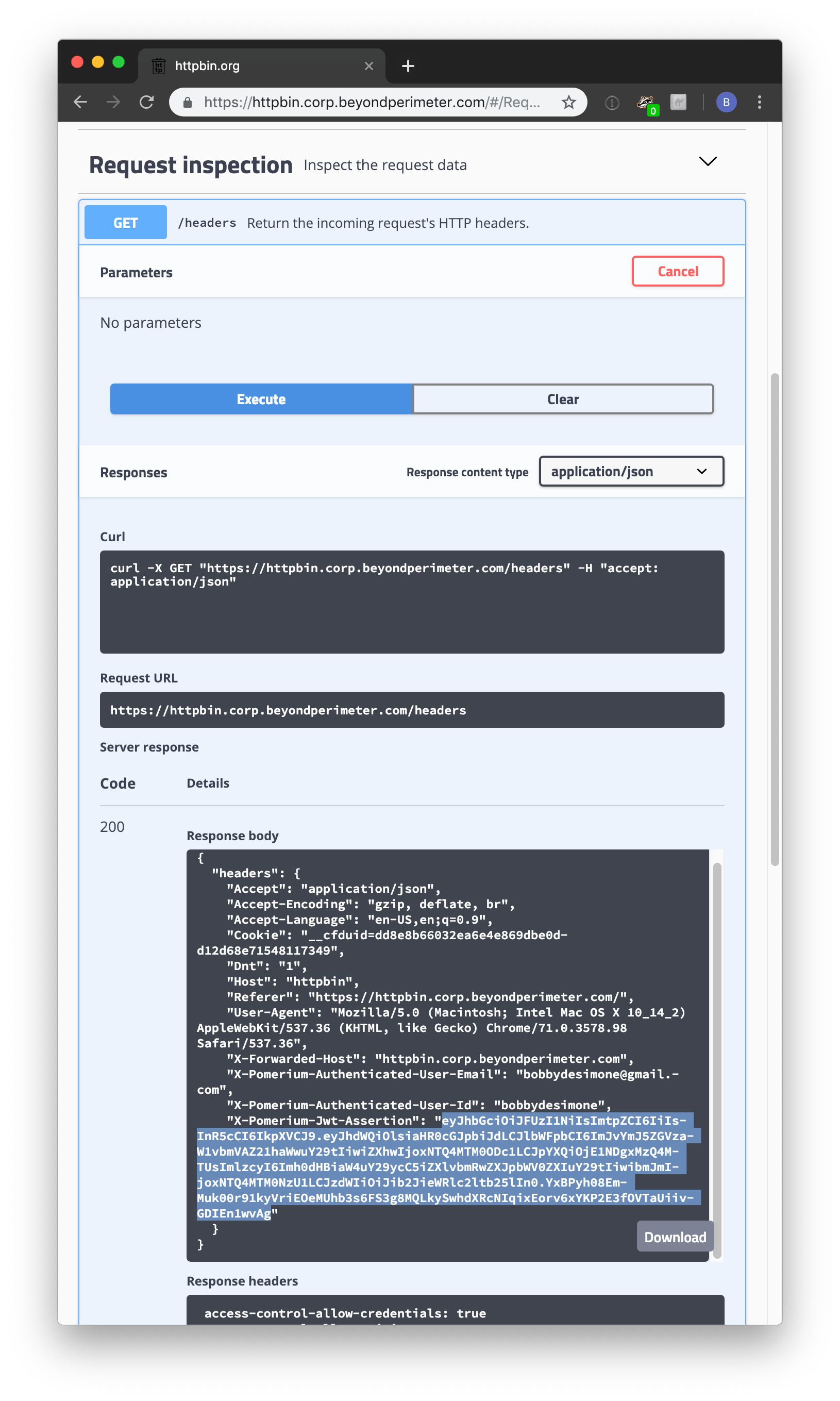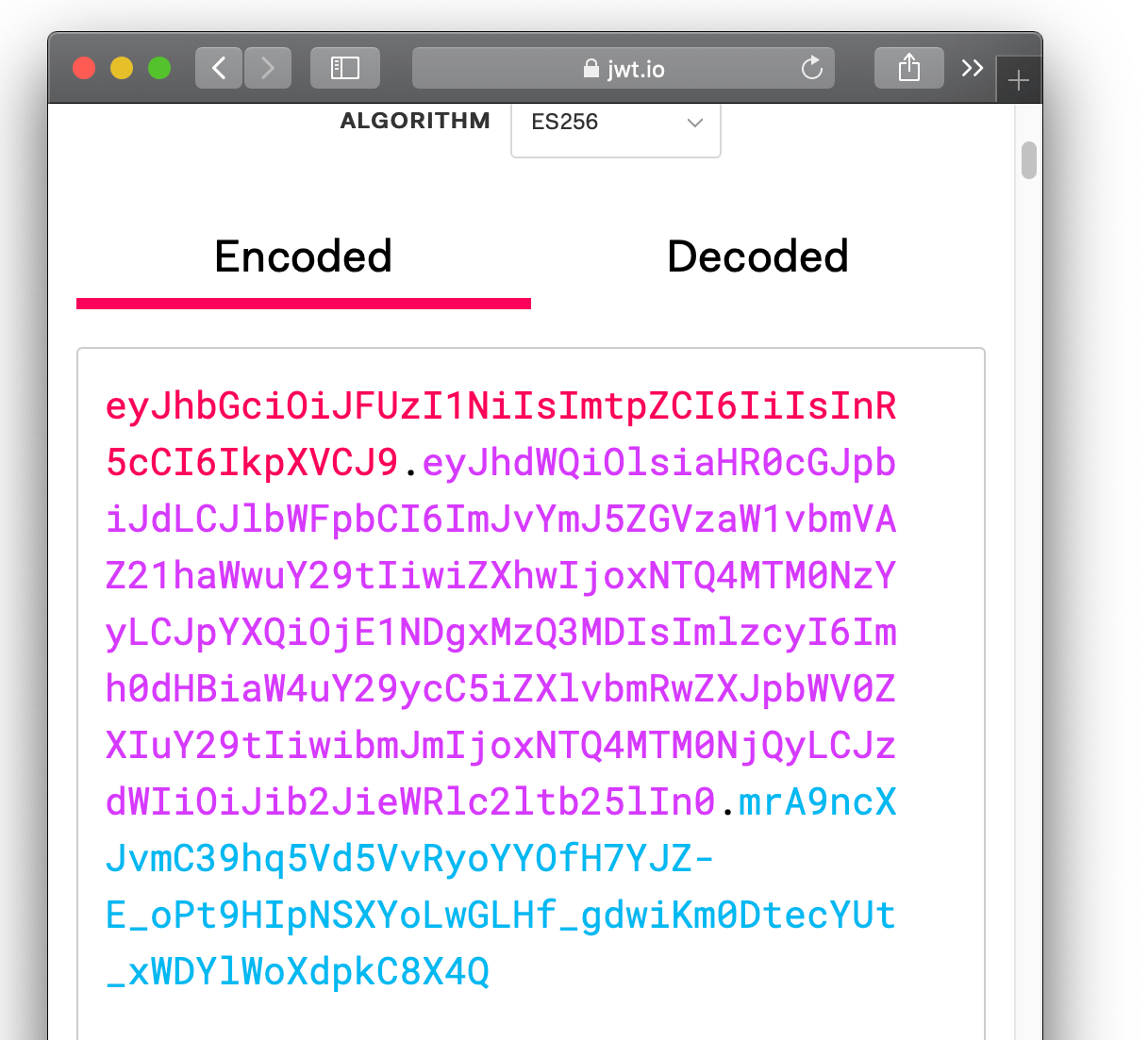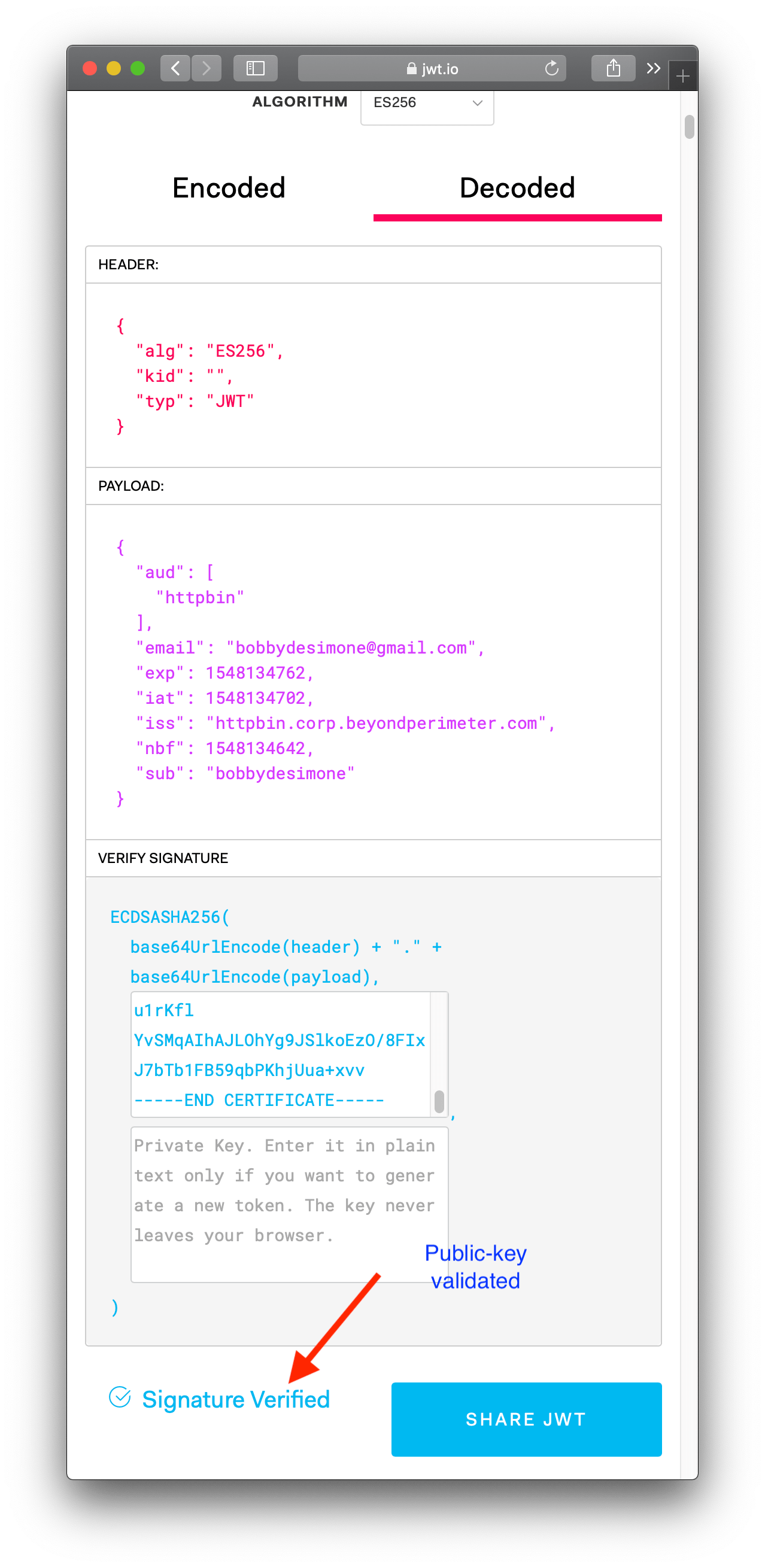Identity Verification (from your app)
This article describes how to retrieve a user's identity from a Pomerium-managed application. Pomerium uses JSON web tokens (JWT) to attest that a given request was handled by Pomerium's authorization service.
Prerequisites
To secure your app with signed headers, you'll need the following:
- An application you want users to connect to.
- A JWT library. Only the
ES256signing algorithm is supported.
JWT verification
If a signing key is set, the user's associated identity information will be included in a signed attestation JWT that will be added to each requests's upstream header X-Pomerium-Jwt-Assertion. The signed attestation JWT is also available at the special /.pomerium/jwt endpoint of any URL handled by Pomerium.
You should verify that the JWT contains at least the following claims:
| JWT | description |
|---|---|
exp | Expiration time in seconds since the UNIX epoch. Allow 1 minute for skew. |
iat | Issued-at time in seconds since the UNIX epoch. Allow 1 minute for skew. |
aud | The client's final domain e.g. httpbin.corp.example.com. |
iss | Issuer must be the URL of your authentication domain e.g. authenticate.corp.example. |
sub | Subject is the user's id. Can be used instead of the X-Pomerium-Claim-Sub header. |
email | Email is the user's email. Can be used instead of the X-Pomerium-Claim-Email header. |
groups | Groups is the user's groups. Can be used instead of the X-Pomerium-Claim-Groups header. |
Audience and issuer claims
The attestation JWT's signature can be verified using the public key which can be retrieved at Pomerium's /.well-known/pomerium/jwks.json. A jwks_uri is useful when integrating with other systems like istio. For example:
curl https://route.int.example.com/.well-known/pomerium/jwks.json | jq
{
"keys": [
{
"use": "sig",
"kty": "EC",
"kid": "ccc5bc9d835ff3c8f7075ed4a7510159cf440fd7bf7b517b5caeb1fa419ee6a1",
"crv": "P-256",
"alg": "ES256",
"x": "QCN7adG2AmIK3UdHJvVJkldsUc6XeBRz83Z4rXX8Va4",
"y": "PI95b-ary66nrvA55TpaiWADq8b3O1CYIbvjqIHpXCY"
}
]
}
{
"keys": [
{
"use": "sig",
"kty": "OKP",
"kid": "3aa847838906f3c930f55c2d5885943ac7bede8f780d388015575334f88e77ef",
"crv": "Ed25519",
"alg": "EdDSA",
"x": "xsg1A67wECXAmRnSib8lSsgatcNcYm7vvspQnocPQNc"
}
]
}
Verification in a Single-Page Application
A single-page javascript application can verify the JWT using a fetch to /.pomerium/jwt and a JWT library like jose.
<!DOCTYPE html>
<html>
<head>
<script type="module">
import {
decodeJwt,
createRemoteJWKSet,
jwtVerify,
} from 'https://cdn.skypack.dev/jose';
async function main() {
const result1 = await fetch('/.pomerium/jwt');
const jwt = await result1.text();
const claims = decodeJwt(jwt);
console.log('Unverified Claims:', claims);
const jwksURL =
'https://' + claims.iss + '/.well-known/pomerium/jwks.json';
const jwks = await createRemoteJWKSet(new URL(jwksURL));
const {payload} = await jwtVerify(jwt, jwks, {
audience: claims.aud,
issuer: claims.iss,
});
console.log('Verified Claims:', payload);
}
main();
</script>
</head>
<body></body>
</html>
Manual verification
Though you will very likely be verifying signed-headers programmatically in your application's middleware, and using a third-party JWT library, if you are new to JWT it may be helpful to show what manual verification looks like.
Provide Pomerium with a base64 encoded Elliptic Curve (NIST P-256 aka secp256r1 aka prime256v1) Private Key. In production, you'd likely want to get these from your KMS.
openssl ecparam -genkey -name prime256v1 -noout -out ec_private.pem
openssl ec -in ec_private.pem -pubout -out ec_public.pem
# careful! this will output your private key in terminal
cat ec_private.pem | base64Copy the base64 encoded value of your private key to
pomerium-proxy's environmental configuration variableSIGNING_KEY.SIGNING_KEY=ZxqyyIPPX0oWrrOwsxXgl0hHnTx3mBVhQ2kvW1YB4MM=Reload
pomerium-proxy. Navigate to httpbin (by default,https://httpbin.corp.${YOUR-DOMAIN}.com), and login as usual. Click request inspection. Select/headers. Click try it out and then execute. You should see something like the following.
X-Pomerium-Jwt-Assertionis the signature value. It's less scary than it looks and basically just a compressed, json blob as described above. Navigate to jwt.io which provides a helpful GUI to manually verify JWT values.Paste the value of
X-Pomerium-Jwt-Assertionheader token into theEncodedform. You should notice that the decoded values look much more familiar.
Finally, we want to cryptographically verify the validity of the token. To do this, we will need the signer's public key. You can simply copy and past the output of
cat ec_public.pem.
Voila! Hopefully walking through a manual verification has helped give you a better feel for how signed JWT tokens are used as a secondary validation mechanism in pomerium.
In an actual client, you'll want to ensure that all the other claims values are valid (like expiration, issuer, audience and so on) in the context of your application. You'll also want to make sure you have a safe and reliable mechanism for distributing pomerium-proxy's public signing key to client apps (typically, a key management service).
Automatic verification
We currently maintain SDKs for the following languages:
In the future, we will add implementations for:
- Python
- Java
- .NET
Adding Additional Claims
If your IdP passes other claims that you would like to pass to your application, please use jwt-claims-headers to indicate additional claims to be included into the Assertion JWT.